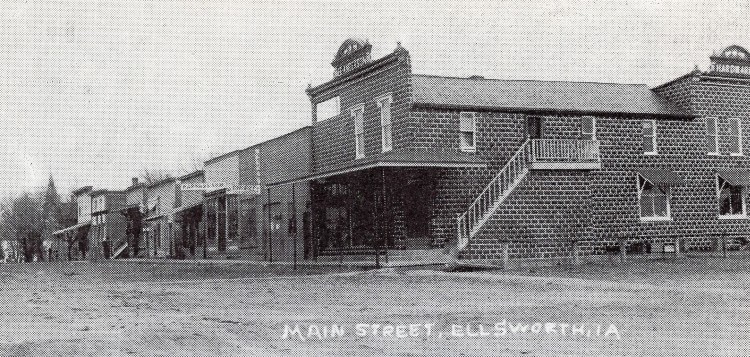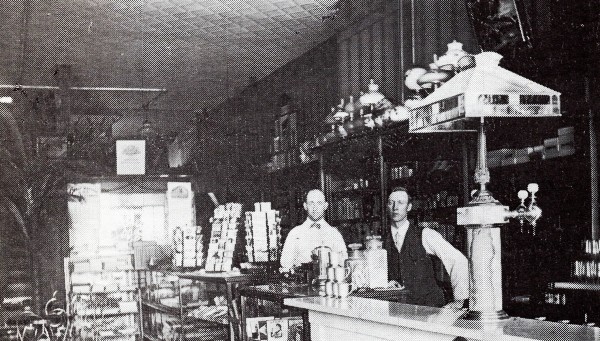
The history of our community - Page 1A |

The history of our community - Page 1A |
![]()
East side of Main Street - 1912

On this photo showing the east side of Main Street in 1912, one sees from left;
| 1. the Methodist Church spire
2. a hotel 3. a hardware store and tin shop 4. a barber shop owned by Lew Williams where his family lived upstairs 5. a grocery and merchantile store, first owned by
Karl Haberly from 1895-1901,
6. the Post Office 7. a harness shop owned by Carl Thoreson 8. a wagon shop 9. at right, one sees a hardware store owned and operated
by E.E. Anderson.
|
![]()
1913 - Brick Grade School constructed
The brick Grade Schoolhouse was built next to the frame schoolhouse in 1913. This was on the West side of the street. After the High School brick building (seen on the next page) was built across the street in 1916, this school served students in the first six grades. This schoolhouse later (until 1973) served as the grade school building for the Ellworth students in the South Hamilton School District.
Note the old frame school is visible at left in the background of this image. It was moved shortly after this school was constructed. It was split into two parts to became two residences, one on each side of the street a half block north of this brick school.
![]()
This is what the West side of Main Steet looked like
in about 1913.
Peterson Drug Store is at center.
(Click to enlarge this image.)
![]()
The John E. Peterson Drug Store
From left: Gus Lakin, Geo Peterson, and John Peterson

This is the interior of the Peterson Drug Store, with John Peterson and his helper Arthur Arnt on the job.
another view of John Peterson and the interior of his Drug Store
![]()

The building just north of the Bank Building ( barely
visible at extreme left),
is the new brick block building erected in 1913-1914
for a cost of $12,000.
The building was purchased in later years by Patty
Olsen Youngclas.
![]()